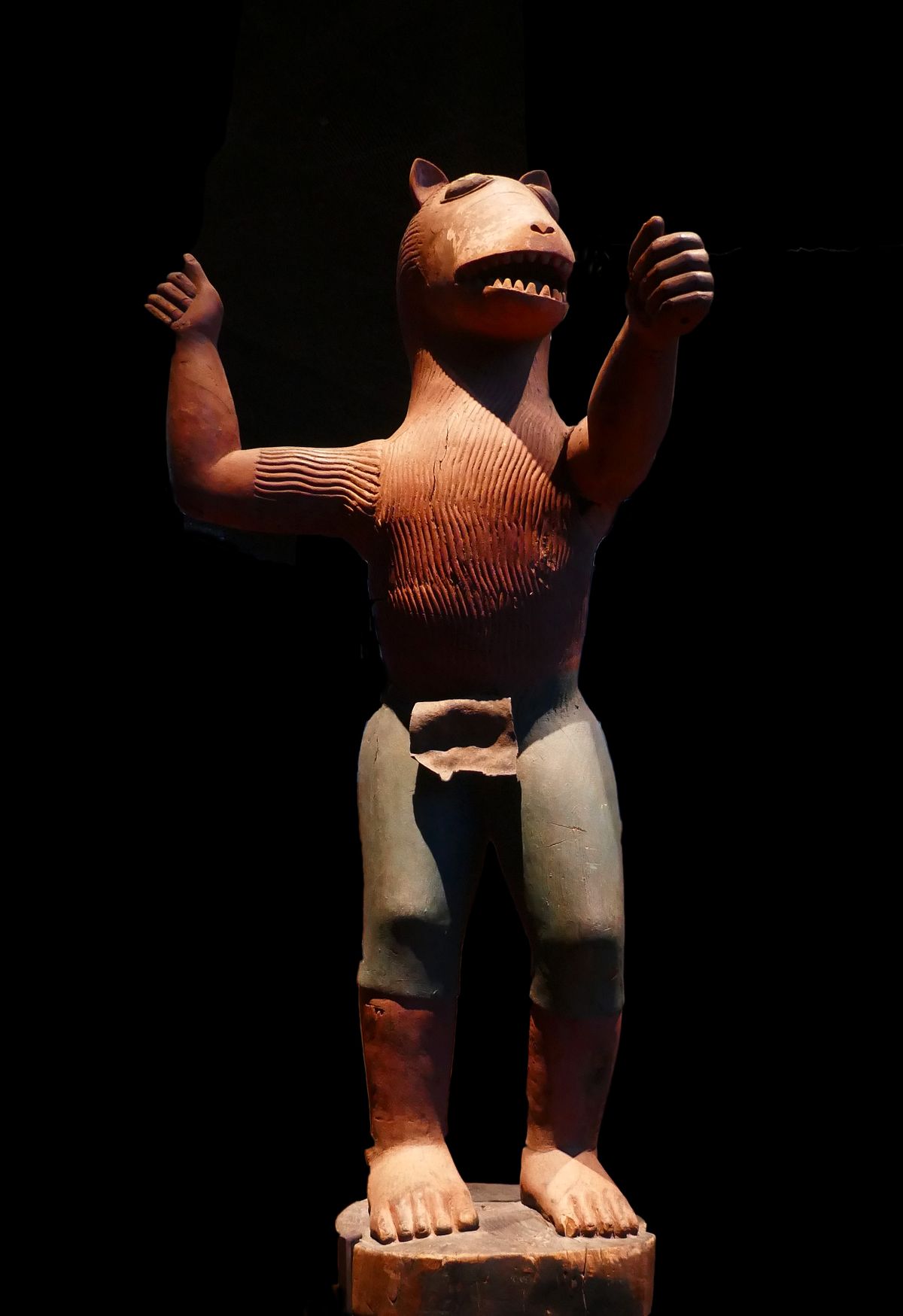

Do you remember the King of Dahomey’s “Amazons”? This king, Behanzin, fiercely resisted the European colonizers.
For the French colonial regime, Dahomey was a “barrier” to be breached in order to reach the African interior.
In 1892, a diplomatic argument was the ideal pretext for marching against the kingdom … In spite of the courage shown by the “Amazons”, Dahomey was no match for the French artillery.

The kingdom of Dahomey was conquered by France after 1892, in spite of the brave fight put up by the Amazons.
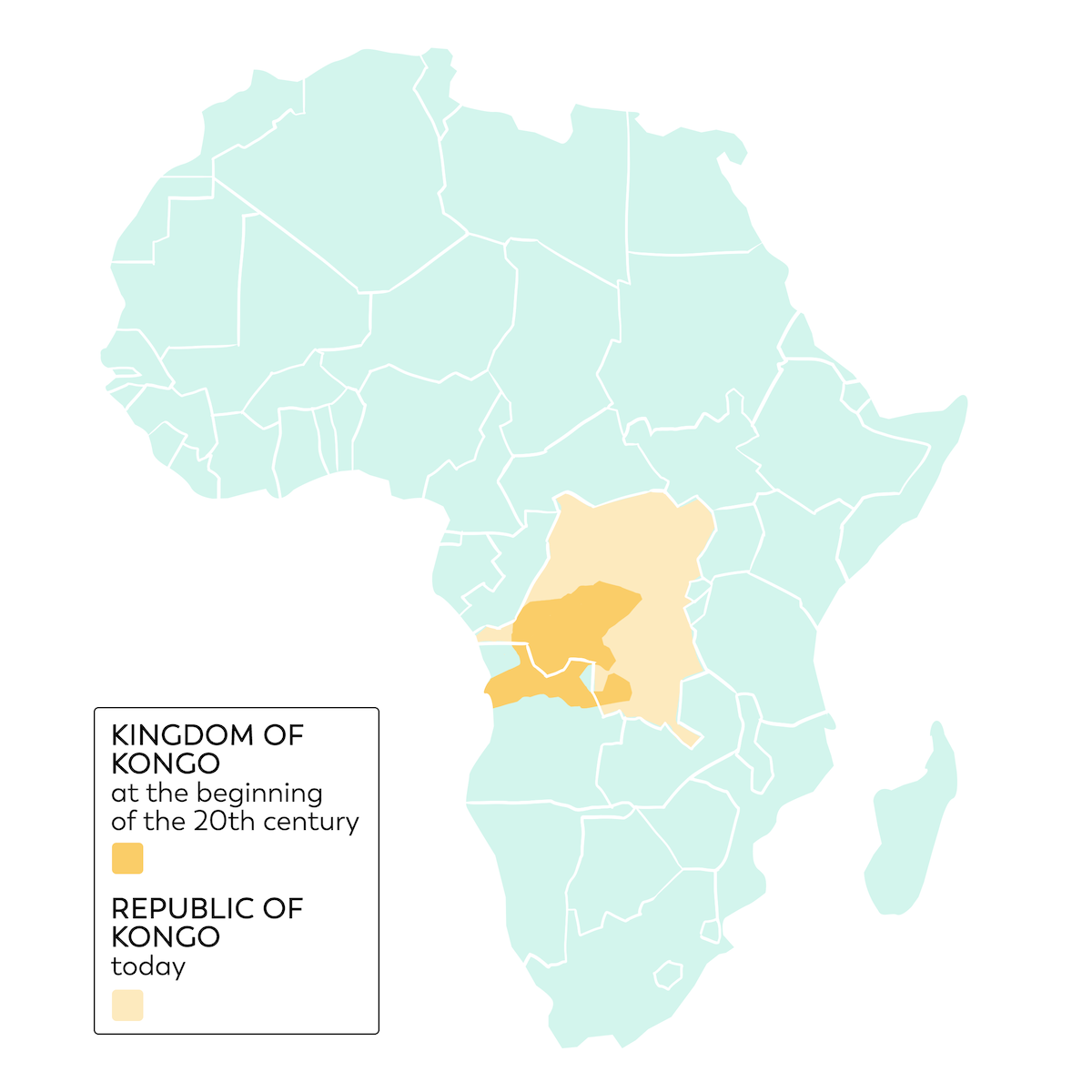
Afro-Portuguese ivory articles are not the only half-European, half-African objects. Let’s head to the Kingdom of Kongo …
This kingdom is one of the very first in Africa to have been Christianized, which started at the end of the 15th century. This Christian influence gave birth to “Kongo Crosses”, on which Jesus is recognizable on the cross, as is the case in European art, but the material (brass) is of local origin, along with some additions…
In this case, as for the frightening nail studded Minkisi, magical power has been added to the cross … a way of finding roots in the kingdom’s traditions and strengthening their effectiveness.
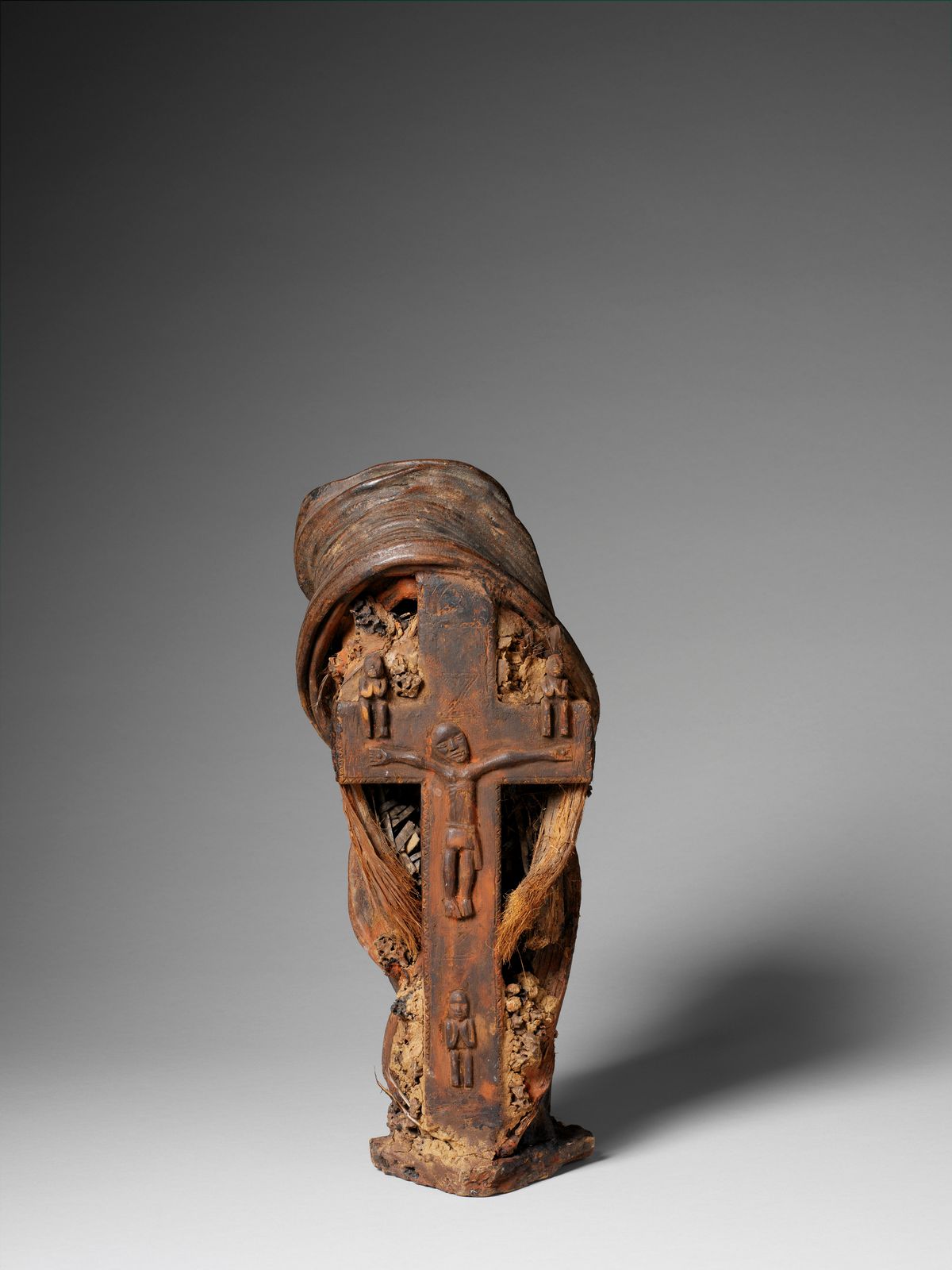

In the Christianized Kongo kingdom, crosses were adjusted to suit local traditions, especially through the belief that they had magical powers.
This is another example of an object in ivory: the famous ivory pendant masks, portraying Queen Idia.
This queen was an extremely important monarch of the Kingdom of Benin during the 16th century. She was a warrior queen, fighting for her son and to protect his kingdom.
He awarded her the title of “lyoba” (Queen Mother) to thank her and had valuable works sculptured as a tribute to her!

“lyoba” Idia, Queen of the Kingdom of Benin during the 16th century, is portrayed in pendant masks, in memory of her warrior exploits.
The arrival of the Portuguese had an unexpected consequence: the birth of curious, half-European, half-African objects …
The shape and the subject were Portuguese, whereas the technique and style came from Africa. These objects became referred to as Afro-Portuguese ivory. Today, the fact that they are rare makes these objects even more exceptional!
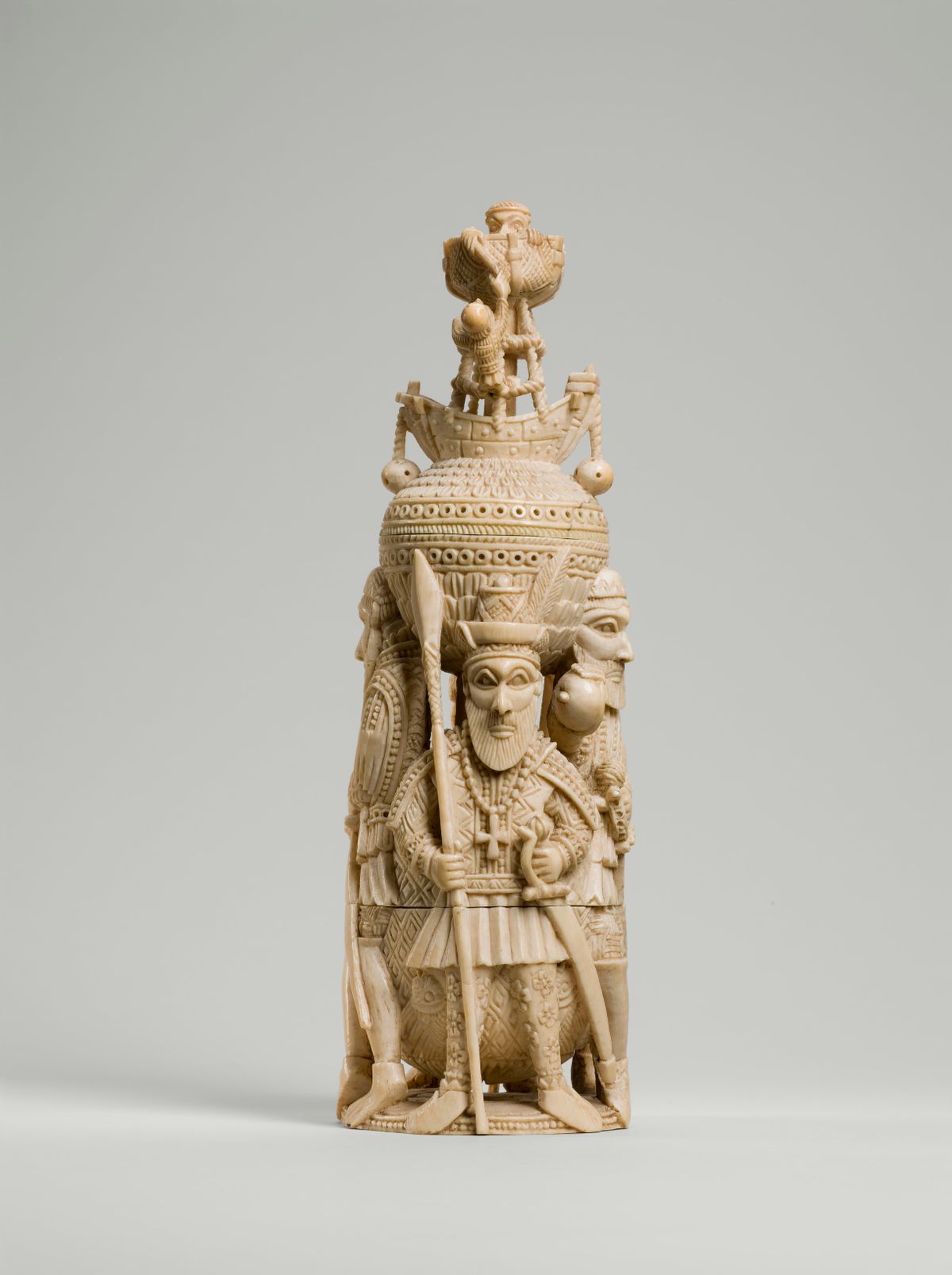

The Portuguese ordered table decorations in ivory from artists in Benin.
Portuguese were the first Europeans to explore Africa.
At the beginning of the 15th century, encouraged by Prince Henry the Navigator, the first boats left the country for Africa, and they made very quick progress!
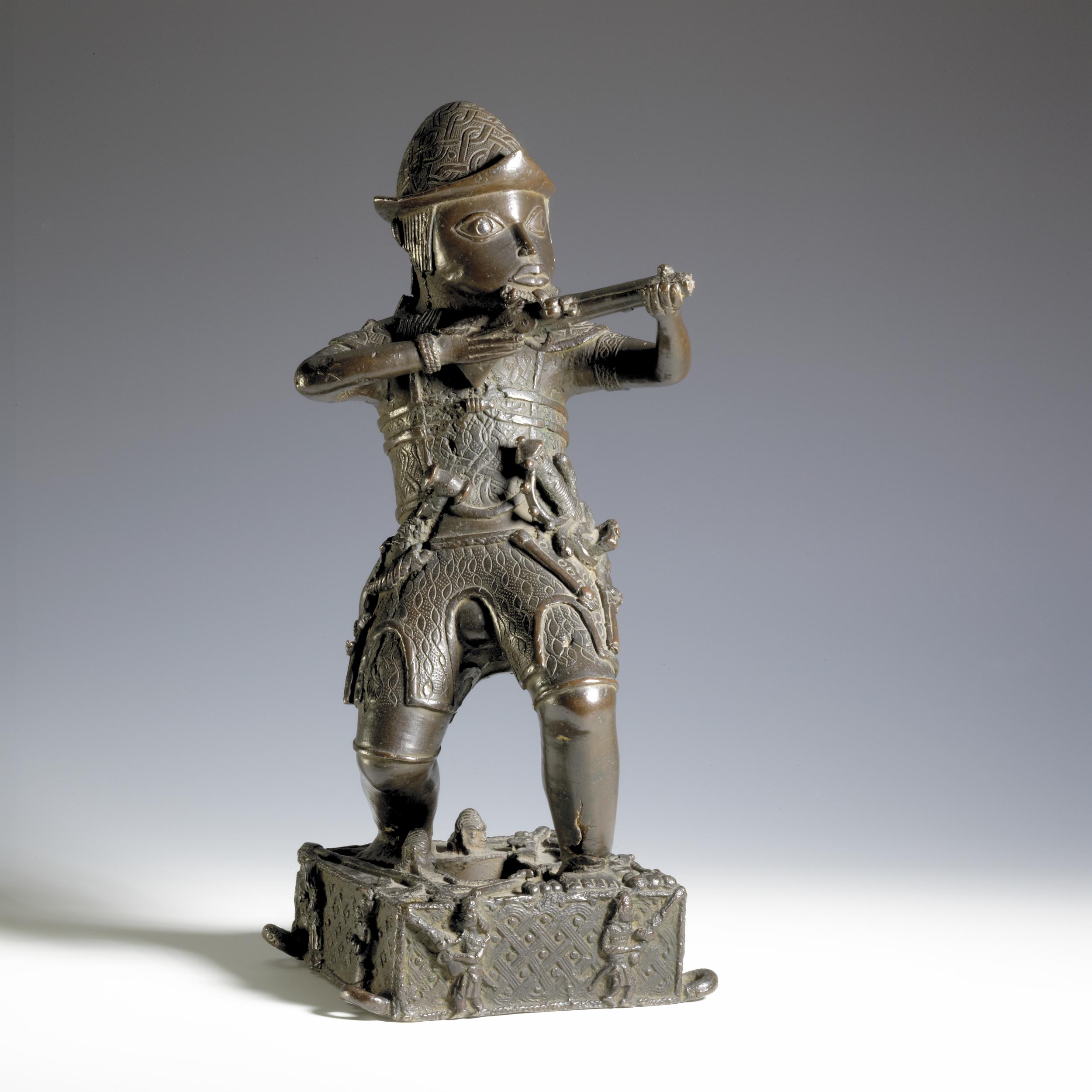
Why this sudden need to explore Africa?
Henry the Navigator was driven by two ambitions:

The Portuguese were the first Europeans to explore Africa, with the aim of bringing back spices, ivory and gold.
When a visitor discovers an African object in a museum, an important indicator is often missing: the name of the artist. This formed the basis of the idea that African art was anonymous.
However, this omission is often due to the carelessness of collectors, who often did not bother to record the artist’s name.
Now, in some regions, artists are very prestigious people! In Nigeria, for example, amongst the Yoruba people, songs have even been composed in honour of the sculptor Olowe d’Ise …


Contrary to common beliefs, African artists were recognized, but their names were often not recorded by western collectors.
Ancestors are also found amongst secondary deities. When important people die, they can continue to influence the life of their descendants.
In Gabon, down to the 20th century the Fang and Kota populations put important dead people in little boxes. Their bones were put into a reliquary, which was a basket topped with a guardian figure, and kept in the chief’s home or on the village square.
What was the role of these figures? They were a symbol of the ancestor’s presence, closely guarding his or her bones.
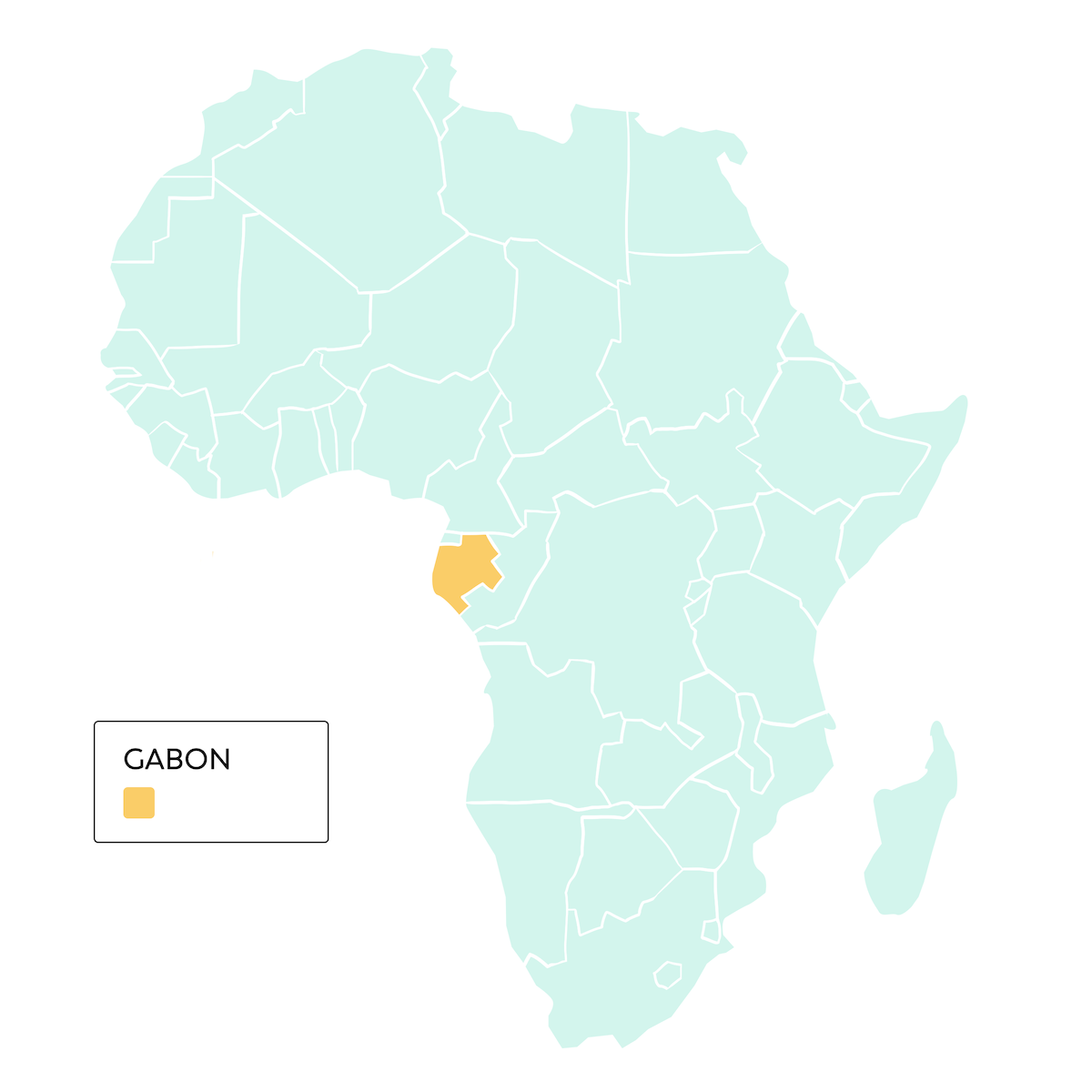

Their ancestors’ bodies were carefully preserved by some parts of the Gabonese population, under surveillance from guardian figures.
Historically speaking, in most African religions, there’s the existence of a supreme God who created the world, but who became so detached from humanity that they were completely unreachable!
To resolve their problems, humans have to call on secondary deities as intermediaries: the spirits. This is known as animism (the Latin word for “spirit” is anima).
Watch out, these secondary deities are far from charming creatures. They must be revered regularly or else they can cause serious trouble!

Historically speaking, most African societies are animist and revere spirits, which are secondary deities.
This is the sort of cliché we hear of when talking about African culture: masks. But, these masks are not just carvings of wood!
On the contrary, in Africa, a mask is part of a “whole”. There are the wooden parts, but there is also the costume concealing the body, the accessories, and the dancing. At this point, the mask becomes a medium through which spirits appear in the community.
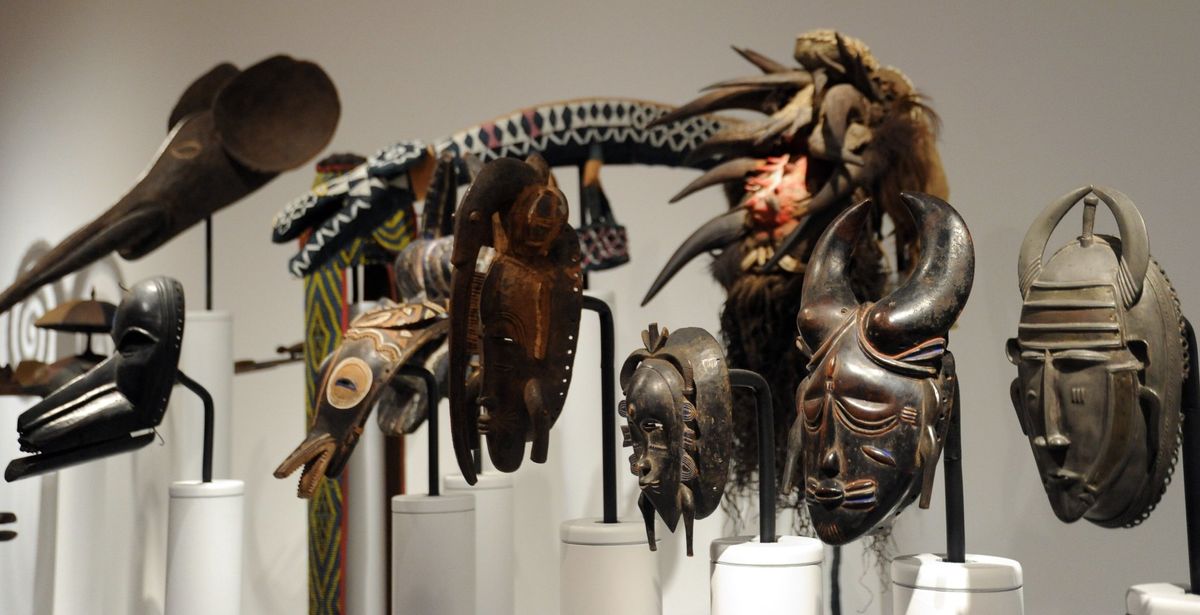

African masks, which are made up of costumes, accessories and dancing, are used for manifestations of spirits.

"*" indicates required fields